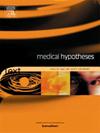A hypothesis exploring gender differences in gait variability using rhythmic auditory stimulation in individuals with Parkinson’s disease
IF 2.1
4区 医学
Q3 MEDICINE, RESEARCH & EXPERIMENTAL
引用次数: 0
Abstract
Parkinson’s Disease (PD) is an incurable and progressive neurodegenerative disorder with worldwide prevalence. The application of external cueing devices to mitigate motor symptoms of Parkinson’s Disease (PD) and improve gait has gained significant attention in recent decades. Many of these studies have yielded significant findings, however, they often overlook gender-related differences that may underlie significant outcomes in longitudinal PD studies and warrant consideration. A review of existing literature shows significant gender differences within this population including differences in disease epidemiology, gait, and dual-tasking abilities. Thus, this paper presents the hypothesis that because males tend to be more severely affected by PD, females are more likely to benefit from external cueing devices such as Rhythmic Auditory Stimulation (RAS). Preliminary data using a small cohort supports this hypothesis, warranting further investigation. Validation of this hypothesis will highlight the importance of conducting inclusive research studies and design approaches. Incorporating gender-specific considerations into treatment plans will optimize the efficacy of these therapies and thus lead to a more significant and widespread reduction in disability and improvement in life for individuals managing the symptoms of PD.
研究帕金森病患者节律性听觉刺激下步态变异性的性别差异
帕金森病(PD)是一种无法治愈的进行性神经退行性疾病,在世界范围内普遍存在。近几十年来,应用外部线索装置缓解帕金森病(PD)的运动症状和改善步态得到了极大的关注。许多这些研究已经产生了重要的发现,然而,他们往往忽略了性别相关的差异,这些差异可能是纵向PD研究中重要结果的基础,值得考虑。对现有文献的回顾显示,在这一人群中存在显著的性别差异,包括疾病流行病学、步态和双重任务能力的差异。因此,本文提出的假设是,由于男性往往更严重地受到PD的影响,女性更有可能受益于外部提示设备,如节奏听觉刺激(RAS)。使用小队列的初步数据支持这一假设,值得进一步调查。验证这一假设将突出进行包容性研究和设计方法的重要性。将针对特定性别的考虑纳入治疗计划,将优化这些疗法的疗效,从而更显著、更广泛地减少残疾,改善PD症状患者的生活。
本文章由计算机程序翻译,如有差异,请以英文原文为准。
求助全文
约1分钟内获得全文
求助全文
来源期刊

Medical hypotheses
医学-医学:研究与实验
CiteScore
10.60
自引率
2.10%
发文量
167
审稿时长
60 days
期刊介绍:
Medical Hypotheses is a forum for ideas in medicine and related biomedical sciences. It will publish interesting and important theoretical papers that foster the diversity and debate upon which the scientific process thrives. The Aims and Scope of Medical Hypotheses are no different now from what was proposed by the founder of the journal, the late Dr David Horrobin. In his introduction to the first issue of the Journal, he asks ''what sorts of papers will be published in Medical Hypotheses? and goes on to answer ''Medical Hypotheses will publish papers which describe theories, ideas which have a great deal of observational support and some hypotheses where experimental support is yet fragmentary''. (Horrobin DF, 1975 Ideas in Biomedical Science: Reasons for the foundation of Medical Hypotheses. Medical Hypotheses Volume 1, Issue 1, January-February 1975, Pages 1-2.). Medical Hypotheses was therefore launched, and still exists today, to give novel, radical new ideas and speculations in medicine open-minded consideration, opening the field to radical hypotheses which would be rejected by most conventional journals. Papers in Medical Hypotheses take a standard scientific form in terms of style, structure and referencing. The journal therefore constitutes a bridge between cutting-edge theory and the mainstream of medical and scientific communication, which ideas must eventually enter if they are to be critiqued and tested against observations.
 求助内容:
求助内容: 应助结果提醒方式:
应助结果提醒方式:


